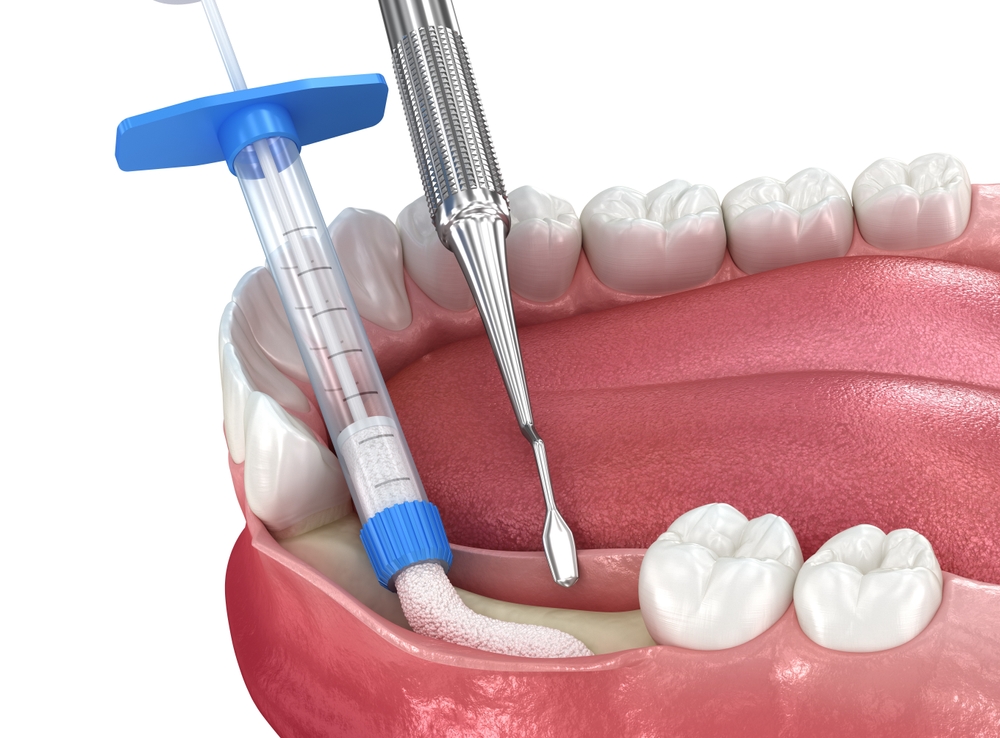
Dentleon İzmir Bornova, Çiğli, Güzelbahçe, Bayraklı Özel Diş Kliniği
What is Flap Operation?
30 September 2025

What is Flap Operation?
Flap operation is a surgical method used in the treatment of advanced gum diseases. The gum tissue is lifted in a controlled manner to make it easier to reach the root surfaces and bone structures. Then, the tooth roots and surrounding inflamed tissues are cleaned, bone corrections are made if necessary, and the gum is sutured back into place. Thanks to this procedure, the health of both teeth and gums is preserved.
Flap operation is preferred especially in cases where gum recession and periodontal pockets have reached an advanced level, and when results cannot be obtained with classical cleaning methods.
What are the Objectives of Flap Operation?
The primary objectives of flap operation include:
Stopping Gum Recession
Gum recession can cause serious problems in terms of both aesthetics and function. When tooth roots are exposed, sensitivity increases, the risk of cavities increases, and teeth appear longer than they are. With the flap operation, the gums are brought to their healthy position after the root surfaces are thoroughly cleaned. Thus, both the progression of the recession is stopped and the teeth look more aesthetic and healthy. In addition, thanks to this intervention in the early period, future tooth loss is prevented.
Maintaining Gum and Bone Health
Periodontal diseases affect not only the gums but also the bone tissue that supports the teeth. Over time, bone loss may occur and cause teeth to loosen. During the flap operation, both the gum and bone surfaces are cleaned and corrected in detail. Bone loss is prevented with bone grafting applications when necessary. Thus, the teeth are attached to the jawbone much more firmly. In the long term, this process helps prevent tooth loss and preserve chewing function.
Clearing Inflamed Tissue
The biggest danger of gum diseases is bacteria and inflammation that accumulate in deep areas that are invisible to the naked eye. Normal brushing, flossing, or simple cleaning cannot reach these areas. When the gum tissue is lifted in a controlled manner with the flap operation, all inflamed tissues accumulated on the root surfaces can be cleaned. In this way, bad breath disappears and the gum tissue begins to heal again in a healthy way. The possibility of bacteria taking hold in the cleaned areas later also decreases, which reduces the risk of recurrence of the disease.
What Should Be Done Before Flap Operation?
Before the flap operation, the patient’s general oral and dental health is examined in detail. Tartar cleaning is done, and pre-treatments are applied if necessary. The points that the patient should follow before the operation are as follows:
- Using antibiotics or pain relievers prescribed by the doctor
- Paying attention to oral hygiene before the operation
- Quitting smoking at least 1 week in advance
- Not coming on an empty stomach on the day of the operation
These steps help the operation result in a healthier and faster recovery.
How is Flap Operation Performed?
Flap surgery is performed under local anesthesia and is generally a painless procedure. Here’s the step-by-step process:
- The area is anesthetized with local anesthesia.
- Gum tissue is removed in a controlled manner.
- Tooth root surfaces and bone tissue are cleaned in detail.
- If necessary, the bone is shaped or grafts are applied.
- The gum is fixed in place with stitches.
The entire procedure usually takes between 30-60 minutes and more than one area can be treated in the same session.
What is the Recovery Process After Flap Operation?
Although the recovery process after the operation varies from person to person, the first recovery is seen within an average of 7-10 days. Full recovery may take several weeks. Points to be considered are as follows:
- Hot foods and drinks should be avoided for the first 24 hours
- Medicines prescribed by the doctor should be used regularly
- Soft and warm foods should be preferred
- No pressure should be applied to the operation area
- Smoking and alcohol should not be consumed
If proper care is not taken after flap operation, the recovery time may be prolonged. It is of great importance to pay attention to the nutrition process, especially after the flap operation.
Frequently Asked Questions About Flap Operation
What is the Difference Between Curettage and Flap Operation?
Curettage is a treatment method applied especially in the early stages of gum disease. Plaque, tartar and superficial inflamed tissues accumulated in the gum pockets are cleaned with special tools. However, if the pockets are too deep or the disease is advanced, curettage may not be sufficient.
Flap operation is a more comprehensive and surgical procedure. In this method, the gum is lifted in a controlled manner, providing full access to the root surfaces and bone tissue. Thus, inflamed tissues in deep areas are cleaned, bone surfaces are corrected and the gums are brought back to a healthy position. In short, curettage offers a more superficial cleaning, while flap operation provides a deep and permanent solution.
Is Flap Operation Painful?
Many patients worry about pain when they hear the word surgery. However, flap operation is performed under local anesthesia, so the patient does not feel any pain during the procedure. There may be slight pain, swelling or tenderness after the operation. These symptoms are normal and usually subside within a few days. Painkillers and antibiotics prescribed by the doctor will make this process more comfortable. In addition, paying attention to oral hygiene and following nutritional recommendations after the operation helps to minimize pain and swelling.
How Many Sessions Does the Operation Take?
Flap operation is usually completed in a single session. In the procedure, which takes an average of 30-60 minutes, all teeth in one area can be treated. However, if there are many problems throughout the mouth, the operation can be divided into several sessions. In this way, both the patient’s comfort is preserved and a more detailed cleaning can be done in each area. The number of sessions is determined entirely by the extent of the disease, the depth of the gum pockets and the condition of bone loss. Your dentist will create the most appropriate treatment plan for you after the examination.
Will the gums recede after flap operation?
With proper care and regular check-ups, gum recession usually does not recur. However, it can occur again in case of smoking and poor oral hygiene.
Flap operation is one of the most effective methods in controlling advanced gum diseases. Regular check-ups and correct treatment methods are very important for a healthy oral structure.
If you are having problems with your gums, you can review our gum treatment page prepared by DentLeon’s expert staff for detailed information .
Recent Posts



